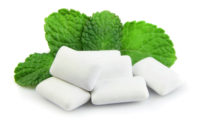![]()
Chewing the Fat about Obesity
From the opera house (where a too-voluptuous diva was
fired because of her weight) to the White House, obesity has been making
even more headlines than usual in recent weeks. For anyone who somehow
missed the news, just-released federal figures show that obesity is now the
nation's second-leading cause of preventable deaths. Only tobacco is
directly linked to more.
Thanks to the high-profile Atkins and South Beach diet
regimes, a growing number of Americans are striving to knock off some
pounds by cutting carbohydrates, and many are succeeding. Carb avoidance
may be even more widespread than we thought, a just-released study from
Opinion Dynamics Corp. of Cambridge, Mass., suggests. According to that
survey, 20 percent of adults said they had tried a low-carb diet since
2002, and 11 percent of Americans — 24 million adults — report
that they currently are on a low-carbohydrate diet.
The topic of obesity and low-carb products was very
much front and center during the National Confectioners Association's
State-of-the-Industry conference held last month in Orlando, Fla.
Conference speaker Russ Case, director of sales at Adams & Brooks,
added an interesting perspective to the discussion when he tracked the
evolution of food and beverages targeted to dieters. In the 1960s and
1970s, Case pointed out, the emphasis was on sugar-free products. In the
1980s, the focus was on reduced-calorie. By the 1990s, low-fat and no-fat
offerings were proliferating. And now, of course, it's all about
low-carb!
Will the cycle stop here? I doubt it. My prediction is
that the next trend in the cycle will be a move back to counting calories.
The Food and Drug Administration's Obesity Working Group made a
number of fat-fighting recommendations earlier this month. The
group's efforts are built around the theme that "calories
count," a key weight loss message that's been overshadowed by
the more recent focus on fat and carbohydrates as leading dietary villains.
So what's the candy industry to do? I think that
we'd do well as an industry to follow the nutritionist's mantra
of balance, variety and moderation. Certainly we must continue to
unapologetically offer a variety of confectionery options. Manufacturers
and retailers need to balance their candy assortments — delivering
everything from the low-carb and sugar-free to the ultra-decadent. In an
optimal retail environment, the sugar-free and carb-reduced candy will be
positioned both in the candy aisle and in special sections targeted to
dieters, diabetics and the generally carb-conscious. Finally, encouraging
moderation via appropriate portion sizes, easily recloseable packaging, and
clear nutritional labeling are key components of responsible candy
marketing.
Nutritional science is complex and confusing.
It's also constantly evolving. Which means that today's
approaches to manufacturing and marketing candy will need to be continually
tweaked as we move into the future. There's nothing wrong with that.
The only real mistake, I think, is burying our head in the sand and
ignoring the monumental size and scope of our nation's obesity
problem and its potential to affect candy sales.
Mary Ellen Kuhn



